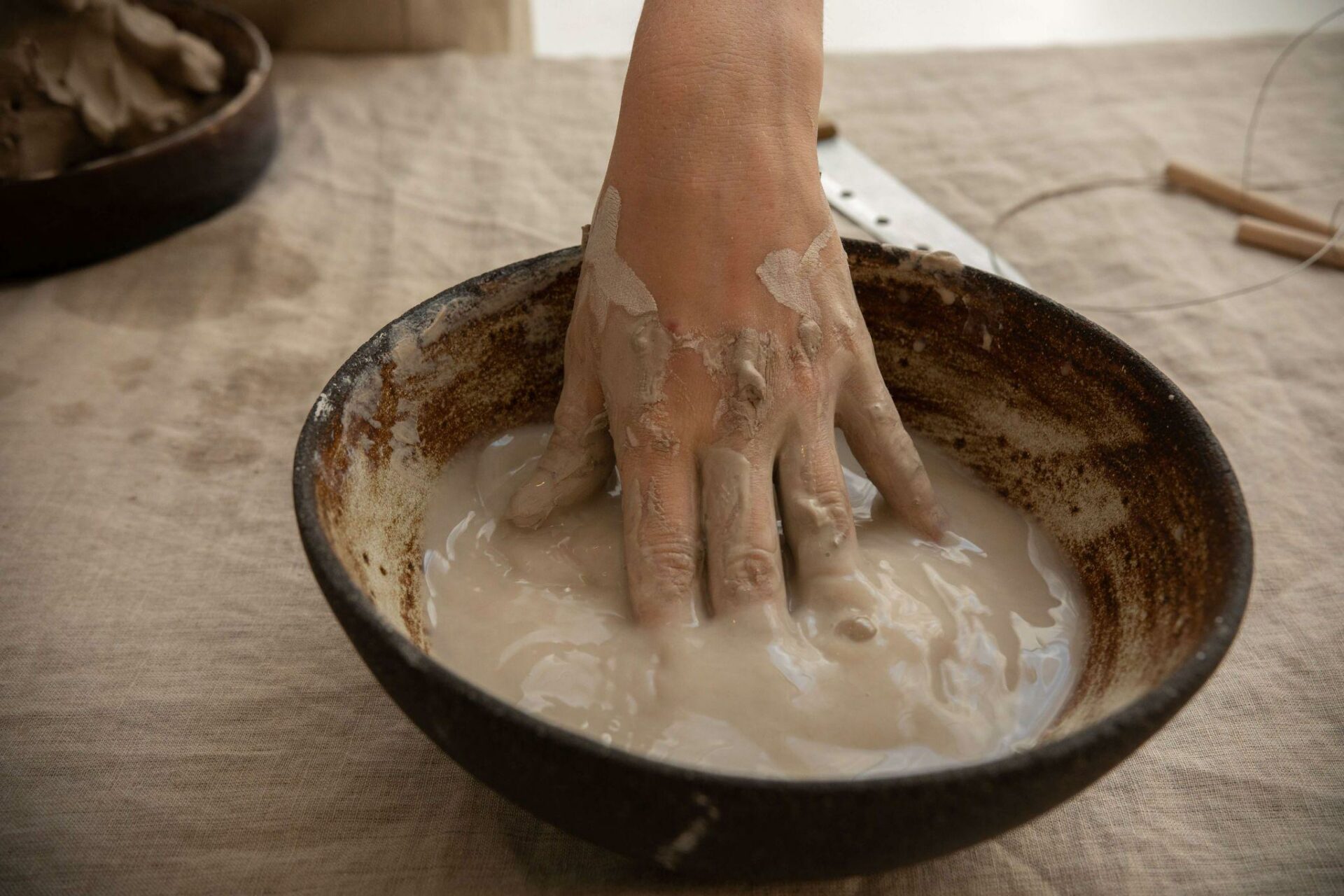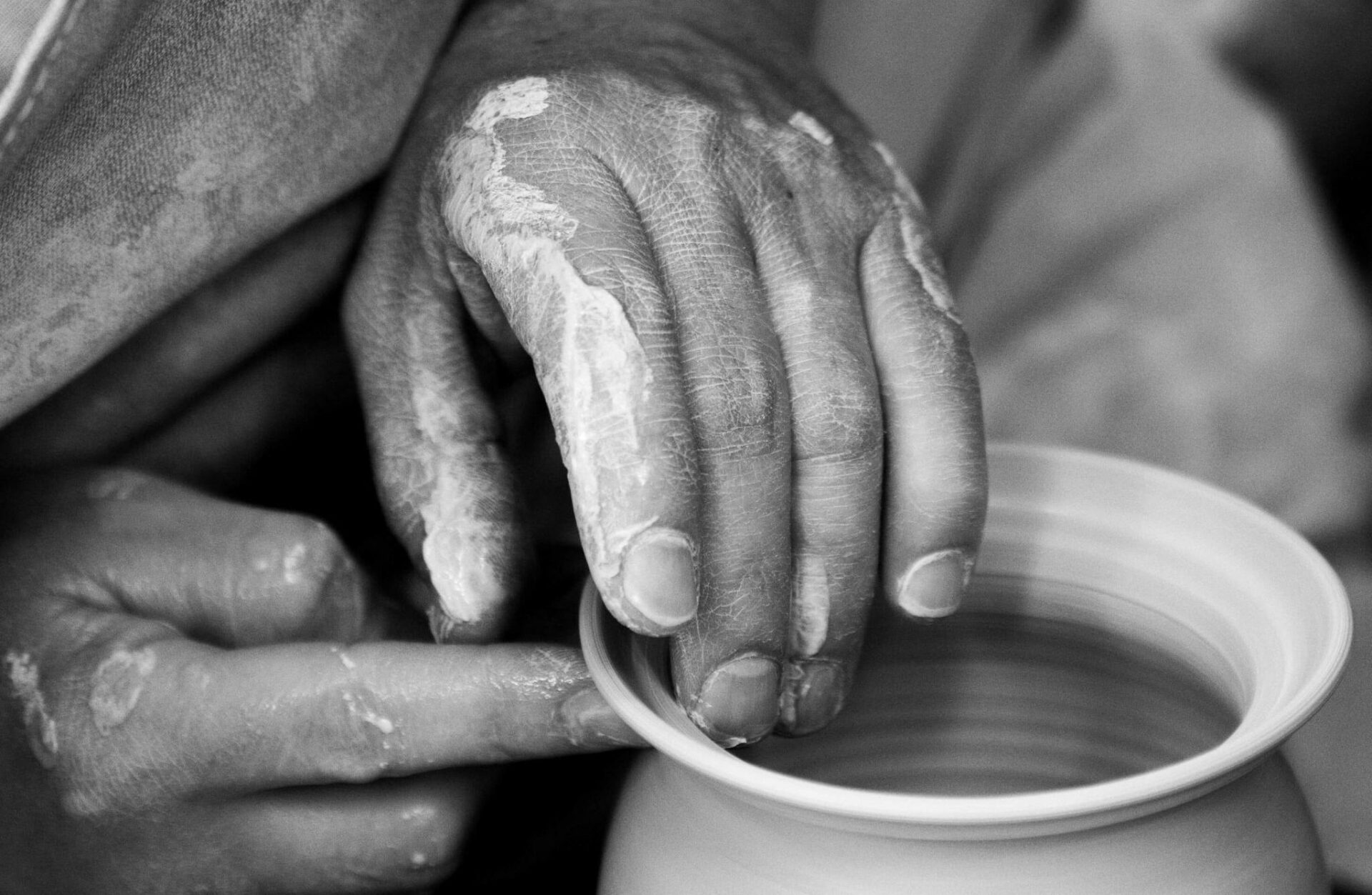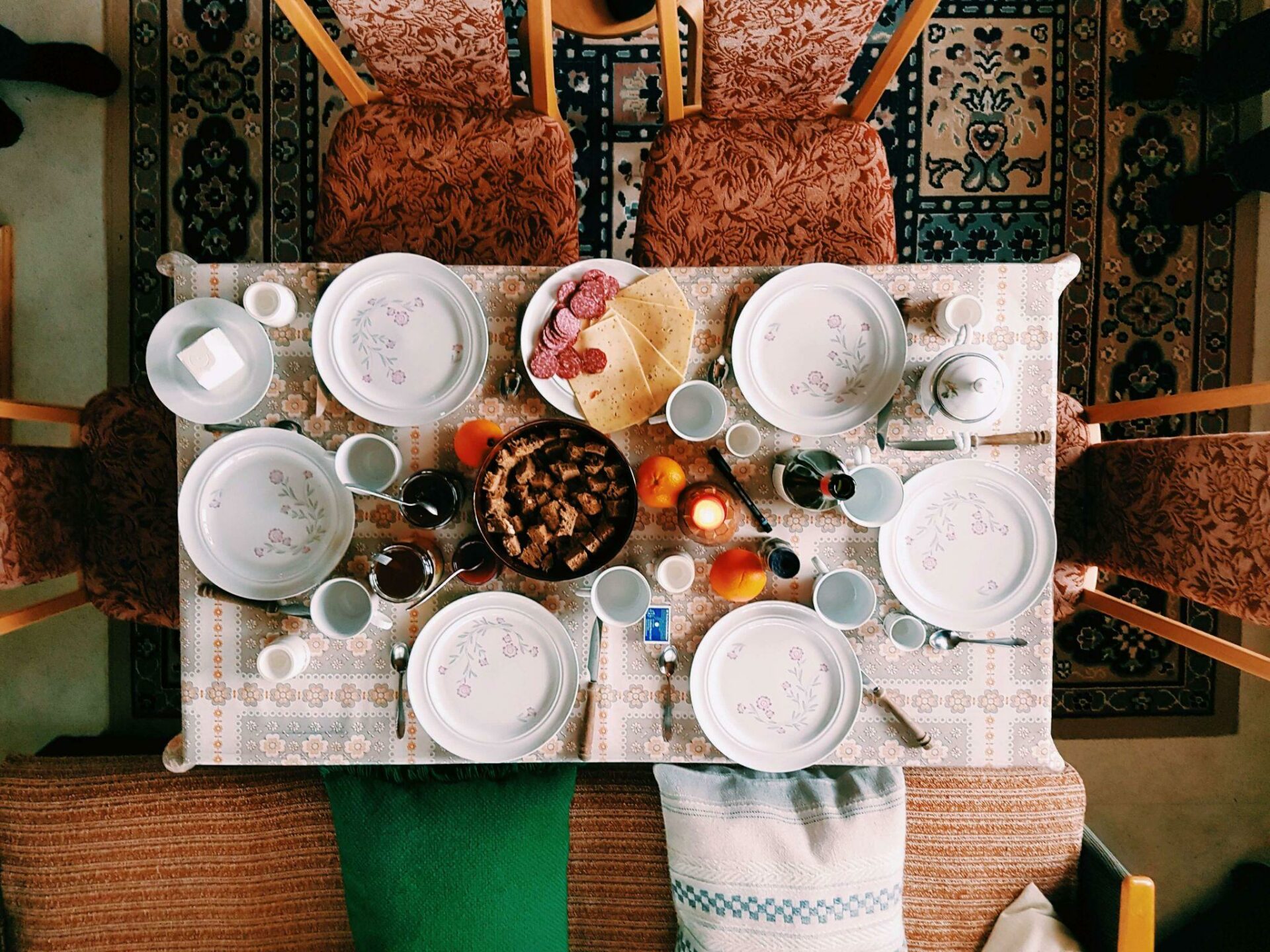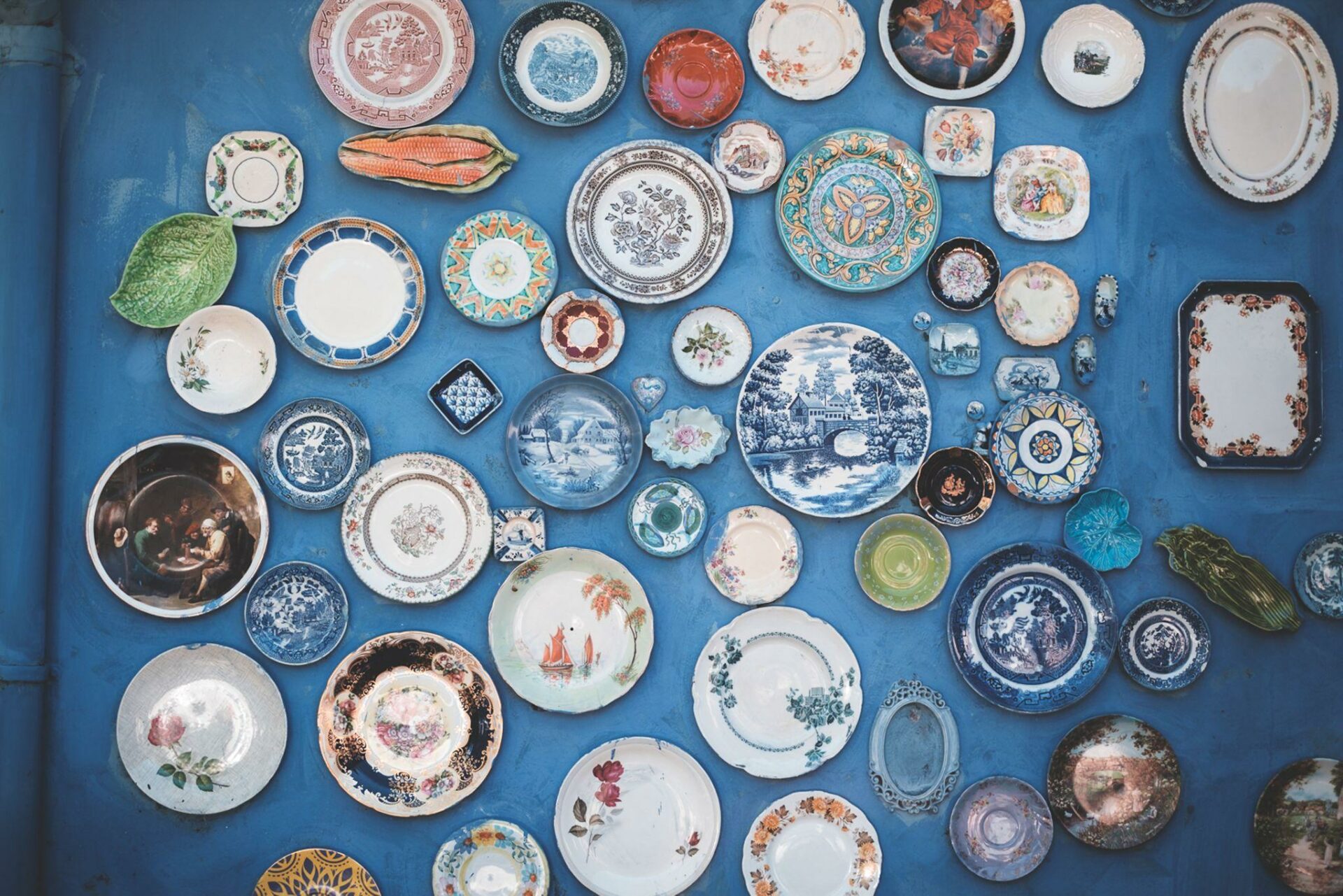The tableware you choose affects your dining room’s overall aesthetic and feel.
Yet, when choosing tableware, you often get confused about the differences between fine china, porcelain, and dinnerware.
You wonder what you should choose for a formal dinner party and what for a casual meal with family members and friends,
This article will explain each type of tableware and provide tips for choosing the best one for your home.
What is Fine China?
Fine china is a type of high-quality tableware. The word ‘china’ comes from its origin. Chinese people first produced fine china in the Tang dynasty in the 16th century.
However, people in many countries can make fine china to meet the ever-increasing demand. People often love fine china because of its elegant and delicate appearance.
What is Porcelain?
The word ‘porcelain’ derives from ‘porcella’ – a Latin word meaning seashell.
Porcelain has been popular since around the 7th century. Manufacturers started to apply more modern methods to produce porcelain in the 13th century.
Porcelain is ideal for tableware due to its strength, durability, and beauty.
What is Dinnerware?
Dinnerware is a general term that refers to utensils, dishes, and other items when serving and eating food on a dining table.
In other words, dinnerware includes fine china, porcelain, and other options such as stoneware and melamine.
You can consider dinnerware as an extended family of what you would put on your dining table.
Differences Between Fine China and Porcelain
While many people often misunderstand fine china and porcelain, they differ in material, manufacturing process, color, texture, and whether oven, microwave, or dishwasher safe.
1. Material
Fine china and porcelain share some similarities in terms of raw materials. They are both made from kaolin, clays, feldspar, and quartz. Yet, depending on different purposes, people could add other materials during manufacturing.
For example, manufacturers can add cow bone ash and ceramic material into fine china to get bone china. Or manufacturers will add silica into today’s porcelain to make it more translucent and improve its strength and duration.
The exact proportions of these materials are significant as they can affect finished products’ strength, translucence, and color.

2. Manufacturing Process
The typical manufacturing process of fine china and porcelain has three main steps, including mixing raw materials, shaping the mixture into different forms, and firing to create the final product.
However, the firing process decides whether the finished product is porcelain or fine china.
The firing process involves heating the mixture of raw materials to a high temperature in a kiln. After that, the mixture will fuse and turn into a new dense material.
If the manufacturer uses high temperatures around 2,650°F (1,455°C), they have porcelain. If the temperature is lower around 2,200°F (1,200°C), they can create fine china.
The firing process can last several hours or days, and manufacturers can choose different temperatures to get different final products.

3. Color and Texture
Fine china and porcelain color can vary based on the manufacturing process and materials added. Fine china often has a bright white color, while the color of porcelain ranges from bright white to cream.
In addition, manufacturers can decorate fine china and porcelain with various techniques, such as hand painting, transfer printing, or lithography.
Regarding texture, fine china is often softer and more delicate than porcelain. In contrast, as porcelain is heated at a higher temperature than fine china, it often has a much sturdier texture.
People widely use fine china and porcelain for dishes and other decorative items because they are durable and easy to clean.
4. Oven Safe, Microwave Safe, and Dishwasher Safe
- Oven safe
Manufacturers heat dinnerware like fine china and porcelain at very high temperatures in the manufacturing process. Therefore, you don’t have to worry when putting them in the oven.
However, a thermal shock can destroy your beloved fine china and porcelain.
Remember never to put your dinnerware in a preheated hot oven. The best choice is to increase the temperature gradually.
- Microwave Safe
Without precious metal accents, fine china and porcelain are also microwave-safe. Again, a rapid temperature increase can crack your items.
Never directly place frozen items into the microwave; wait until they return to normal temperatures.
- Dishwasher Safe
It is unclear if fine china is safe for dishwashers, but hand washing would be a wiser choice. You should remove rings and other jewelry when washing fine china to avoid scratching them.
Unlike fine china, porcelain is relatively dishwasher safe, except for those with metal accents. However, don’t let them bump into each other when loading them in the dishwasher.
Checking the manufacturer’s instructions before putting your fine china or porcelain into an oven, microwave, or dishwasher is vital to avoid damage.
5. Comparison Table
|
Fine China |
Porcelain | |
|---|---|---|
|
Material |
Kaolin, clays, feldspar, quartz, and other materials |
Kaolin, clays, feldspar, quartz, and other materials |
|
Manufacturing process |
Firing temperature: |
Firing temperature: |
|
Color |
Bright white |
Bright white to cream |
|
Texture |
Soft and delicate |
Sturdier and more durable |
|
Oven Safe |
Yes |
Yes |
|
Microwave Safe |
Yes |
Yes |
|
Dishwasher Safe |
No |
Yes |
Which Should You Choose?
You already know the differences between fine china, porcelain, and dinnerware, so now you can decide which to choose.
People usually use fine china for more formal occasions such as weddings, anniversaries, and other special events.
Because it is delicate and requires special care to keep it in good condition, people don’t use fine china for casual meals.
Fine china is also a beautiful and thoughtful gift for special occasions like housewarming. When choosing fine china as a gift, it’s essential to take into consideration the style and preferences of your loved ones.
Compared with fine china, porcelain is more durable, so that you can use it for everyday meals.
Porcelain is not only safe to use in the freezer and oven but also microwave and dishwasher safe. Additionally, its smooth and hard texture makes porcelain non-stick and easy to clean.
As mentioned above, dinnerware consists of dishes, bowls, and utensils used during mealtime. You can choose a different set of dinnerware for various purposes, such as everyday meals, formal dinners, and outdoor parties.
Plastic dinnerware can be a better choice for frequent use if you have kids. Plastic dinnerware is child friendly as it is unlikely to crack even when your children carelessly drop it.

Final Verdict
While fine china and porcelain share some similarities, the heating temperatures decide what manufacturers will receive at the end of the manufacturing process.
Dinnerware refers to any tableware used for serving and eating meals from various materials, and both fine china and porcelain are different types of dinnerware.
Finally, it is important to consider your intended purpose and personal style before buying your new tableware.

